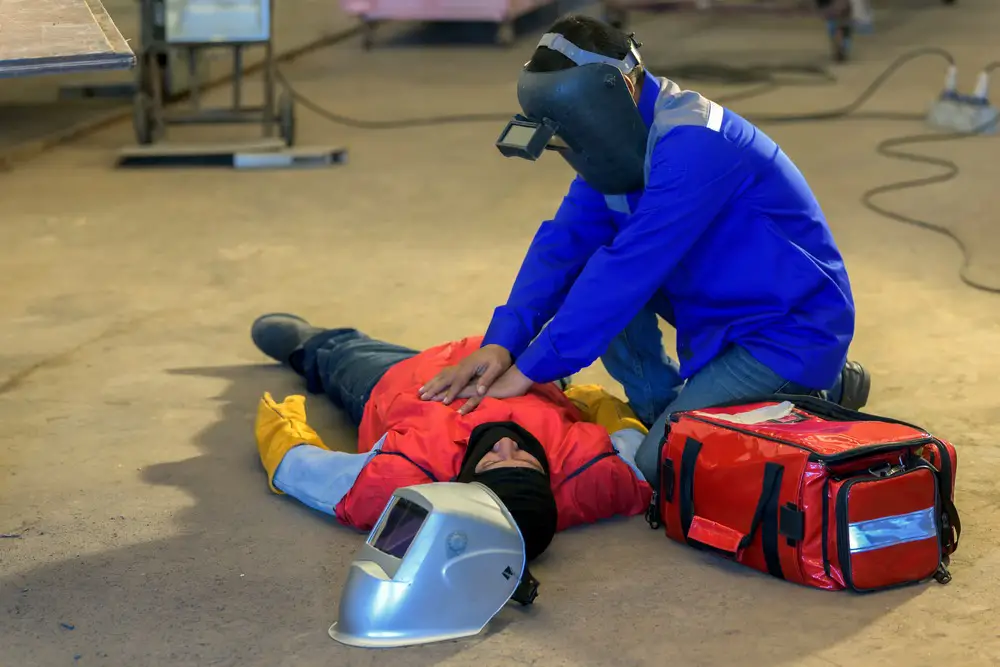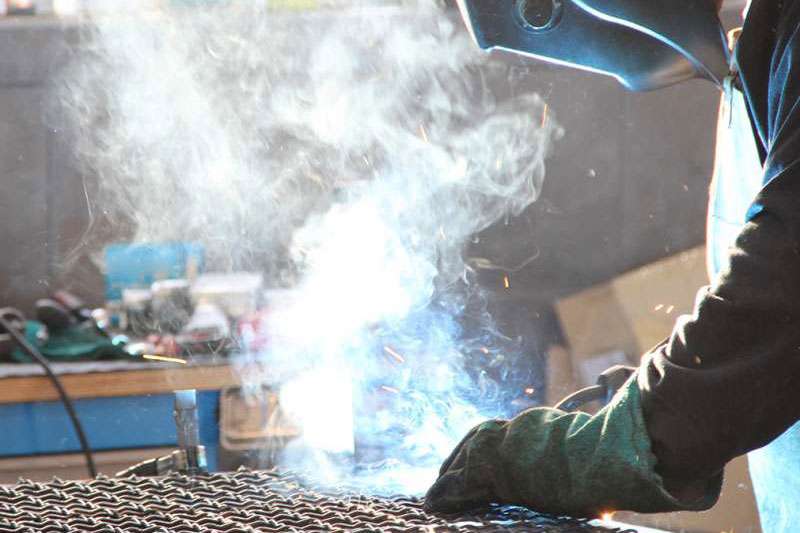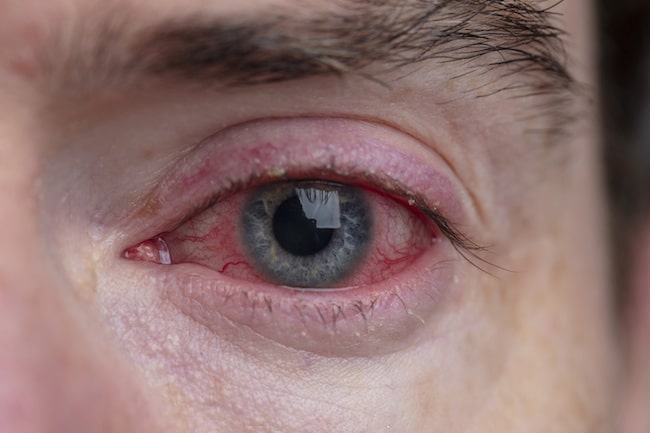Welding is one of the most dangerous jobs. Welders are exposed to a variety of hazards that can result in serious injuries or even death. Welding, on the other hand, can be made quite safe if best practices are followed.
These injuries and damages cause long-term or even permanent physical damage, which can mean the end of your career and, in some cases, your life too.
Welders are at risk of serious physical injuries that can be fatal or result in permanent and catastrophic damage as a result of these workplace hazards. Here are some permanent effects of welding dangers:
-
-
- Amputation.
- Blindness.
- Burns.
- Cancer.
- Injuries from crushing
- Electrocution.
- Irreversible Lung and Kidney damage caused by welding fumes.
- Lacerations.
- Nerve damage caused by welding fume exposure.
- Overall Bodily Trauma as a Result of Explosion Impact.
- Suffocation caused by welding gas exposure.
-
Causes of long term welding damage
1.) Exposure to welding fumes and gases
Welding exposes you to invisible gaseous fumes such as ozone, nitrogen oxides, chromium and nickel oxides, and carbon monoxide, which can easily penetrate your lungs.
The resulting damage can be severe depending on the gas or fume, the concentration, and the duration of your exposure.
All welding organizations must ensure that effective engineering controls are in place and being used correctly to control welding fumes, including when welding outside.
Employers must also provide adequate and suitable respiratory protective equipment (RPE) to welders if engineering controls alone are insufficient to control all fume exposure.
Welding fumes and gases can cause the following:
-
-
- Pneumonia.
- Asthma.
- Cancer.
- Metal fume fever.
- Irritation of the throat and lungs, including throat dryness, tickling, coughing, and tight chests.
-
2.) Explosions and fires
Welding arcs generate extreme temperatures, which pose an unavoidable fire and explosion risk. The arc produces a large amount of infrared, ultraviolet (UV), and visible radiation. UV radiation is especially dangerous because it burns unprotected skin and causes skin cancer over time.
The arc also generates intense heat, sparks, and spatter that can be seen from up to 35 feet away. Before beginning work, all flammable materials should be removed from the welding area. Oil, gasoline, paint, cardboard, paper, wood, acetylene, hydrogen, and propane are some examples.
Welders must also be aware of specific potential hazards in their work environment, such as working in confined spaces or at an elevated level.
3.) Electric shocks
During the arc welding process, live electrical circuits are used to generate a pool of molten metal. As a result, when welding, you run the risk of receiving an electric shock.
Electric shock is the most serious hazard posed by welding and can cause serious injuries and fatalities, either directly or as a result of a fall from a height following a shock.
You also run the risk of receiving a secondary electric shock if you touch a part of the welding or electrode circuit while welding.
Electric shocks are commonly caused-
-
-
- In wet conditions.
- While dressed in wet clothing.
- On metal structures or flooring.
- In cramped quarters where you must lie, kneel, or crouch.
-
To avoid electric shocks-
-
-
- Avoid skin contact with the electrode or metal parts.
- Dry gloves and clothing are required.
- Isolating yourself from the welded metals.
- Dry insulation is used between the body and the ground.
-
4.) Noise threats
You are likely to be exposed to loud, prolonged noises while performing welding activities. A loud noise is defined as one that exceeds 85 decibels (A), and welding activities such as flame cutting and air arc gouging can produce noise levels that exceed 100 decibels (A) (A). This can be extremely harmful to the ears and result in hearing loss.
Noise-induced hearing loss can be caused by repeated or immediate exposure to loud noises.
Noise-induced hearing loss can cause the following complications:
-
-
- Tinnitus, which is the term for ringing in the ears.
- Vertigo, or dizziness, on occasion.
- Increased heart rate.
- High blood pressure.
-
5.) UV and infrared radiation exposure
Looking at the intense bloom of UV light produced by welding without proper PPE for welding curtains can cause arc-eye, a painful and sometimes long-lasting condition.
Many factors, such as distance, duration, and angle of penetration, can influence the severity of a flash burn injury. Long-term exposure to arc flashes may also cause cataracts and result in vision loss.
Other types of eye damages include:
-
-
- Grit, sparks, and dust are examples of foreign bodies that enter the eye.
- Particulate fumes and gases that can cause conjunctivitis.
-
See also: How Long Does a Welder Eye Last?
6.) Burns
When welding, you are vulnerable to severe burns due to the combination of high-temperature welding arcs, UV rays, and molten metal. These burns, which can affect the skin or the eyes, can be extremely dangerous. They can also occur quickly.
Burns typically occur when welders believe they can avoid safety precautions for a few quick welds. However, this isn’t correct and you must always be careful.
Prevention of long term damage by welding
When performing any welding activity, it is critical to maintain high levels of safety. Your employer is legally required to assess, control, and monitor the risks in your workplace.
1.) Use respiratory protective equipment as directed (RPE)
The HSE (Health, Safety, and Environment) has increased its enforcement expectations for all welding fumes, including mild steel welding, in their 2019 Safety Alert.
Employers must ensure that appropriate controls are in place for all welding activities, regardless of duration.
For all indoor welding, employers must impose appropriate engineering controls, such as Local Exhaust Ventilation (LEV). General ventilation is insufficient to reduce exposure to welding fumes.
Where engineering controls alone are insufficient to control exposure, appropriate RPE must be provided.
Workers welding outside must be provided with protective clothing to avoid exposure.
All welders must be properly instructed and trained on any control measures, as well as being competent in their duties.
As an employee, you must follow any control methods implemented by your employer and work in accordance with the training and instruction provided to you.
2.) Wear appropriate PPE at all times
It is your employer’s responsibility to provide you with adequate Personal Protective Equipment (PPE). The PPE you will most likely receive will include:
Respiratory protective equipment (RPE)- Your respirator must be appropriate for the work being performed, as well as your specific needs, and must be thoroughly examined by a trained individual at appropriate intervals.
Side-shielded welding helmets- Welding helmets shield you from UV radiation, particles, debris, hot slag, and chemical burns.
Fire resistant clothing- Fire resistant clothing shields you from burns and protects you from heat, fire, and radiation created during the welding process. You should avoid wearing synthetic clothing. Choose leather and flame-resistant treated cotton instead.
Boots and gloves- Insulated, flame-resistant gloves and steel-toed safety shoes keep you safe from electric shocks, heat, fire, burns, and falling objects.
3.) Follow all the training, and instructions provided by your employer
Employers have a legal obligation to ensure that their employees are properly trained for their jobs. They must also ensure that employees and, if necessary, those nearby are adequately briefed.
Any relevant information about the equipment you use or your work activities must be communicated to you, and any necessary training must be provided.
It is critical that you:
-
-
- Work in accordance with your employer’s training and instructions.
- Cooperate with your employer on all health and safety issues.
- Use any control measures imposed as a result of the workplace risk assessment correctly.
-
4.) Perform the necessary pre-welding inspections.
Before each use, inspect your welding set to ensure that the welding and current return cables are not damaged, that all connectors are clean, undamaged, and correctly rated for the required current, and that the conductor is thick enough to safely carry the current.
As part of your employer’s training and information, you should be given instructions on how to perform these checks.
Conclusion
Welding is indeed a dangerous job, however, it does not mean dangers cannot be prevented. Having a careful attitude is a good start. We need to remember that we are responsible for our safety and also the safety of those around us.
We should never take safety for granted. Wearing appropriate PPEs, following proper instructions and doing the needful will always go a long way in keeping you safe and healthy for life.









